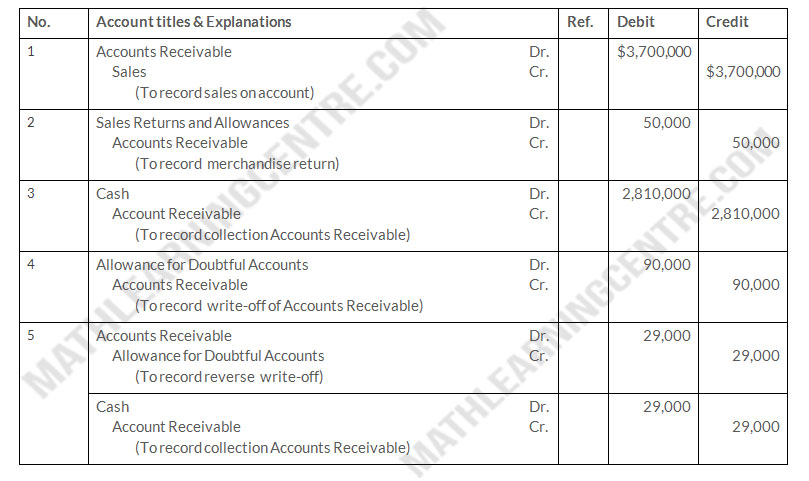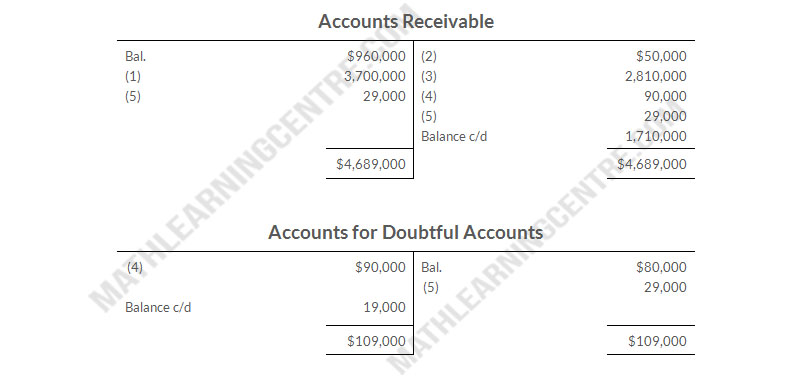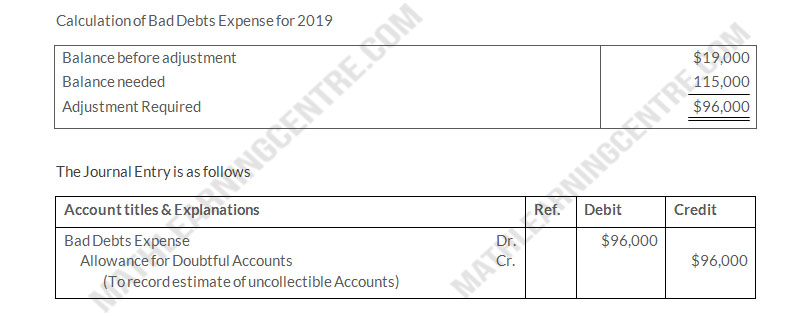At December 31, 2018, House Co. reported the following information on its balance sheet.
| Accounts receivable | $960,000 |
| Less: Allowance for doubtful accounts | 80,000 |
During 2019, the company had the following transactions related to receivables.
| 1 | Sales on account | $3,700,000 |
| 2 | Sales returns and allowances | 50,000 |
| 3 | Collections of accounts receivable | 2,810,000 |
| 4 | Write-offs of accounts receivable deemed noncollectable | 90,000 |
| 5 | Recovery of bad debts previously written off as noncollectable | 29,000 |
Instructions
- Prepare the journal entries to record each of these five transactions. Assume that no cash discounts were taken on the collections of accounts receivable.
- Enter the January 1,2019, balances in Accounts Receivable and Allowances for Doubtful Accounts, post the entries to the tow accounts (use T-accounts), and determine the balances.
- Prepare the journal entry to record bad dbt expense for 2019, assuming that an aging of accounts receivable indicates that expected bad debts are $115,000.
- Compute the accounts receivable turnover for 2019 assuming the expected bad debt information provided in (c).
Solution
a.
House Co.
Journal Entries
Journal Entries

b.
House Co
T-Accounts
T-Accounts

c.

d.

